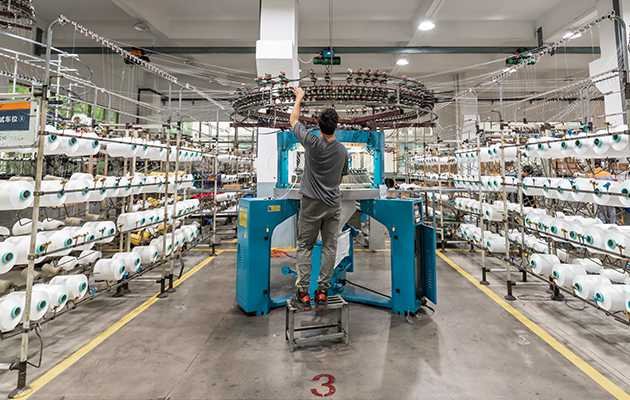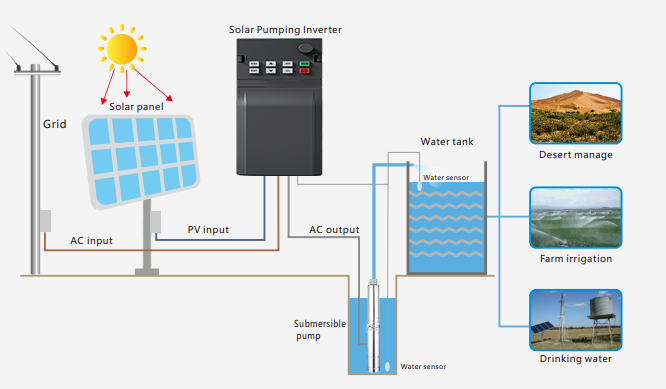- Frequency and Protection
The ball mill has a large starting load. The starting current of the variable – frequency drive (VFD) is 3 – 5 times smaller than that at working frequency. For instance, the power – frequency starting current of a 132kW motor is approximately 1300A, while the VFD starting current is around 300A. The large starting current can cause voltage drop in the power grid, leading to trips or failures of other devices. After using the VFD, the failure rate is significantly reduced.
The ball mill has large load fluctuations. The over – current, over – voltage, overload, phase – loss, overheating, and other protective functions of the VFD reduce the damage rate of the equipment. In power – frequency operation, the motor needs repair or replacement within at least one year. Under VFD control, the normal running time of the motor can reach 3 years or more. Costs related to energy consumption, throttling losses (such as those from valves, dampers, and baffles), as well as maintenance and repair, account for 7% – 25% of production costs. - Process and Energy Saving
The ball mill uses frequency – conversion speed control to find the optimal working speed. This enables more even grinding of particles with fewer passes, and a higher one – time grain qualification rate.
Our inverter has a built – in simple PLC. The multi – speed operation mode can reduce the input current below the power – frequency state. By setting different operating frequencies and running times in different time periods while meeting equipment process requirements, a good energy – saving effect can be achieved, with an energy – saving rate generally reaching 7 – 18%.
Note: A 110kW ball mill using our CD110 – series 132kW inverters runs 19 hours per day. The conservative saving rate is estimated at 9.3%, saving approximately $5,000 in electricity bills annually. The following is a power – saving calculation example analysis. - Factory Introduction
The main motor of the ball mill has a power of 110KW, a rated speed of 1440 rpm, a rated current of 210A, and a rated voltage of 380V. The auxiliary motor has a rated voltage of 380V, a rated current of 32A, and a rated speed of 1440 rpm. The barrel rotation speed is 12N/min. According to the working characteristics of the ball mill, the impact load requires a higher starting torque. Therefore, it is recommended to select a power amplifier, and our CD110 – 4t – 132g/160P will be configured.
The following is the V/F curve picture during motor start.

Power Consumption Analysis at Working Frequency
A ball mill needs to run for 19 hours. First, start the auxiliary motor to run 20 cycles, and then switch to the main motor. The main motor is started by buck – up, with a starting current of 1300A and a starting time of 20s. After starting, the main motor’s working current is about 250A. After two hours of operation, the current drops to 190A until the end.
Power consumption at startup: P1 = 1.732×380×1300×0.8÷1000 = 684.5KW
Power consumption during the 20 – second starting period: 685×20÷3600 = 3.8KWH
Power consumption for grinding one ball at power frequency (19 hours):
Power consumption of startup impact: 3.8kwh + 2×1.732×380×250×0.8÷1000 + 17×1.732×380×190×0.8÷1000 = 1967.8KWh
A ball mill operates 30 days per month and 10 months per year. Annual consumption is:
30×10×1967.8KWh = 590340 KWh
Power Consumption Analysis at Frequency Conversion
Using the CD110 – series 132kW inverter, the ball mill runs for 19 hours. Start with the auxiliary motor running 20 cycles and then switch to the frequency converter until one bucket is completed. According to the equipment process, the VFD is required to set different speeds at different times.

After using the VFD for process transformation, the impact current is about 300A. This five – step current recording is based on the initial operating current of each step. The longer the grinding time, the finer the grinding body, and the smaller the current, so there will be some differences in calculations, but the impact on energy efficiency is not significant.
Power consumption for 19 hours in frequency conversion:
1.732×380×0.8÷1000(2×208 + 4×188 + 4×182 + 4×171 + 5×162)=1785KWh
A ball mill operates 30 days per month and 10 months per year. Annual consumption is:
30×10×1785KWh = 535500KWh
Investment and Recovery:
From the analysis of power – frequency and frequency – converter power consumption, the energy – saving rate after using the VFD can be calculated:
Power – saving rate: (590340 – 535500)/590340×100% = 9.3%
The energy – saving amount after one year of using the VFD is: 590340×9.3% = 54830 KWh
Each kilowatt – hour is charged at $0.1. Annual savings: 54830KWh×0.1 = $5,483.
The investment for each inverter is $2,000, and the investment cost can be recovered in half a year. The inverter’s service life is generally 10 years. Based on the conservative power – saving rate of 9%, there is a pure payback period after half a year. The annual power – saving income is more than $5,000. For high – power ball mills, the energy – saving effect is more pronounced.






